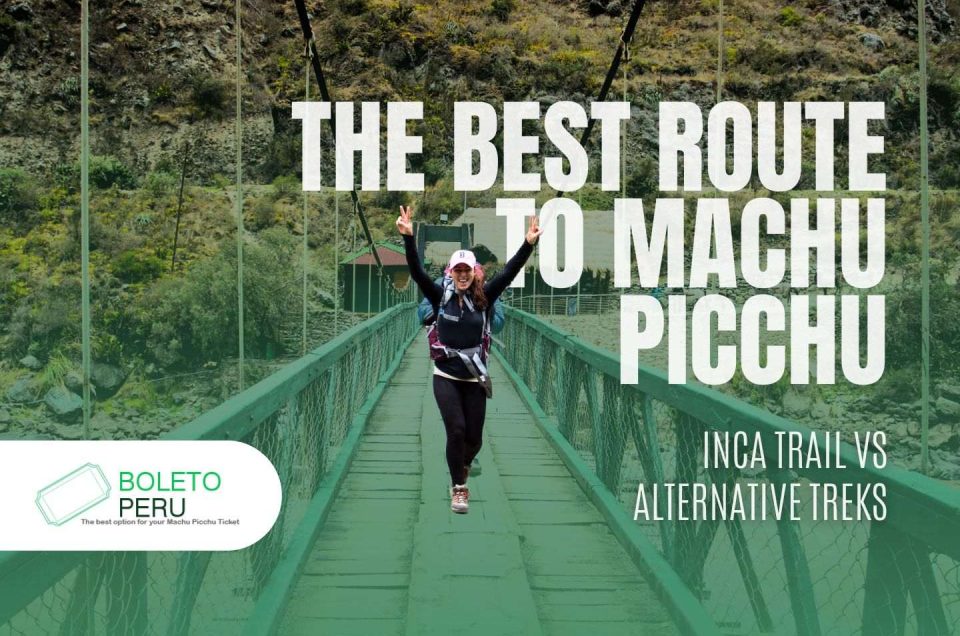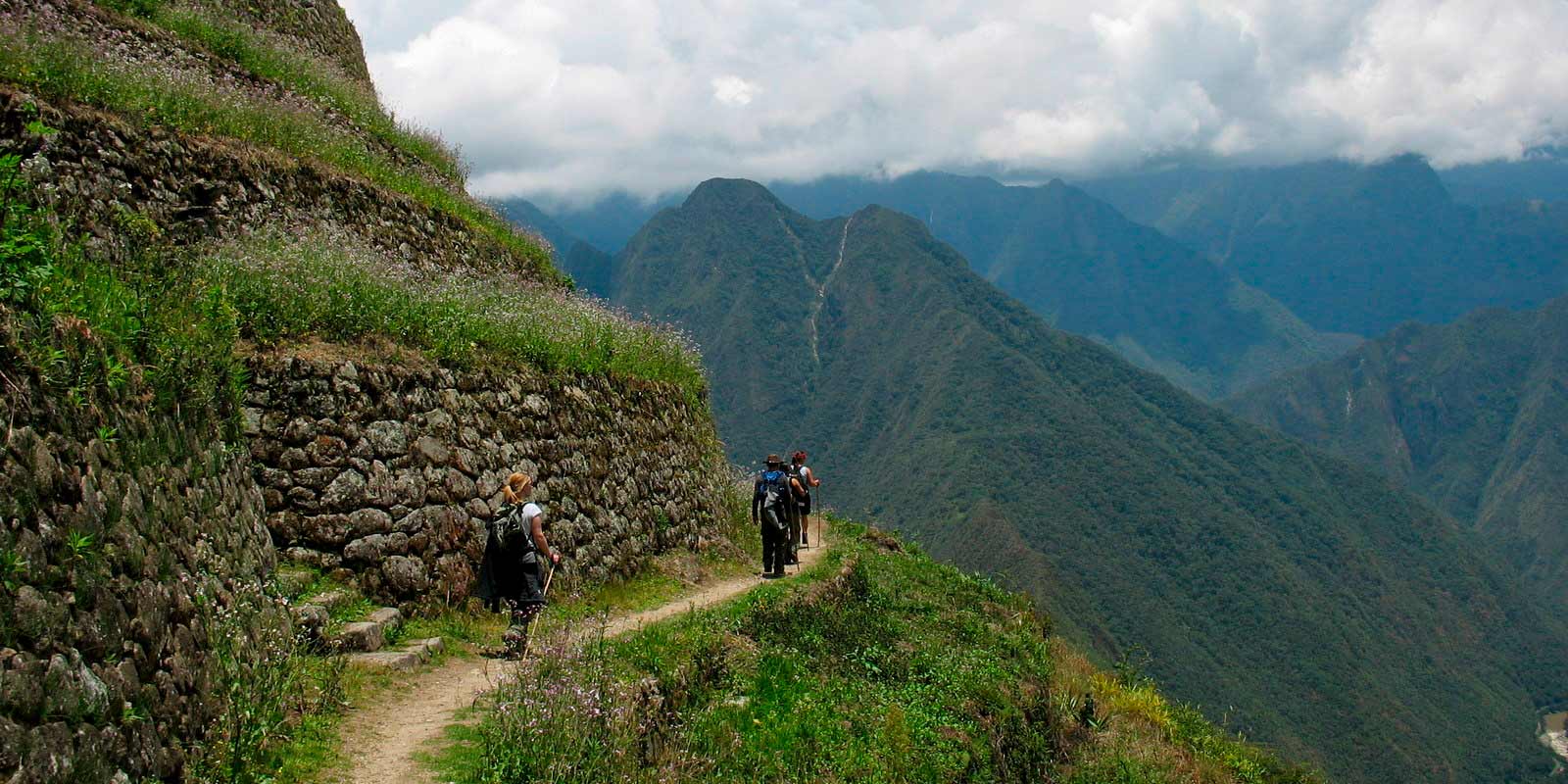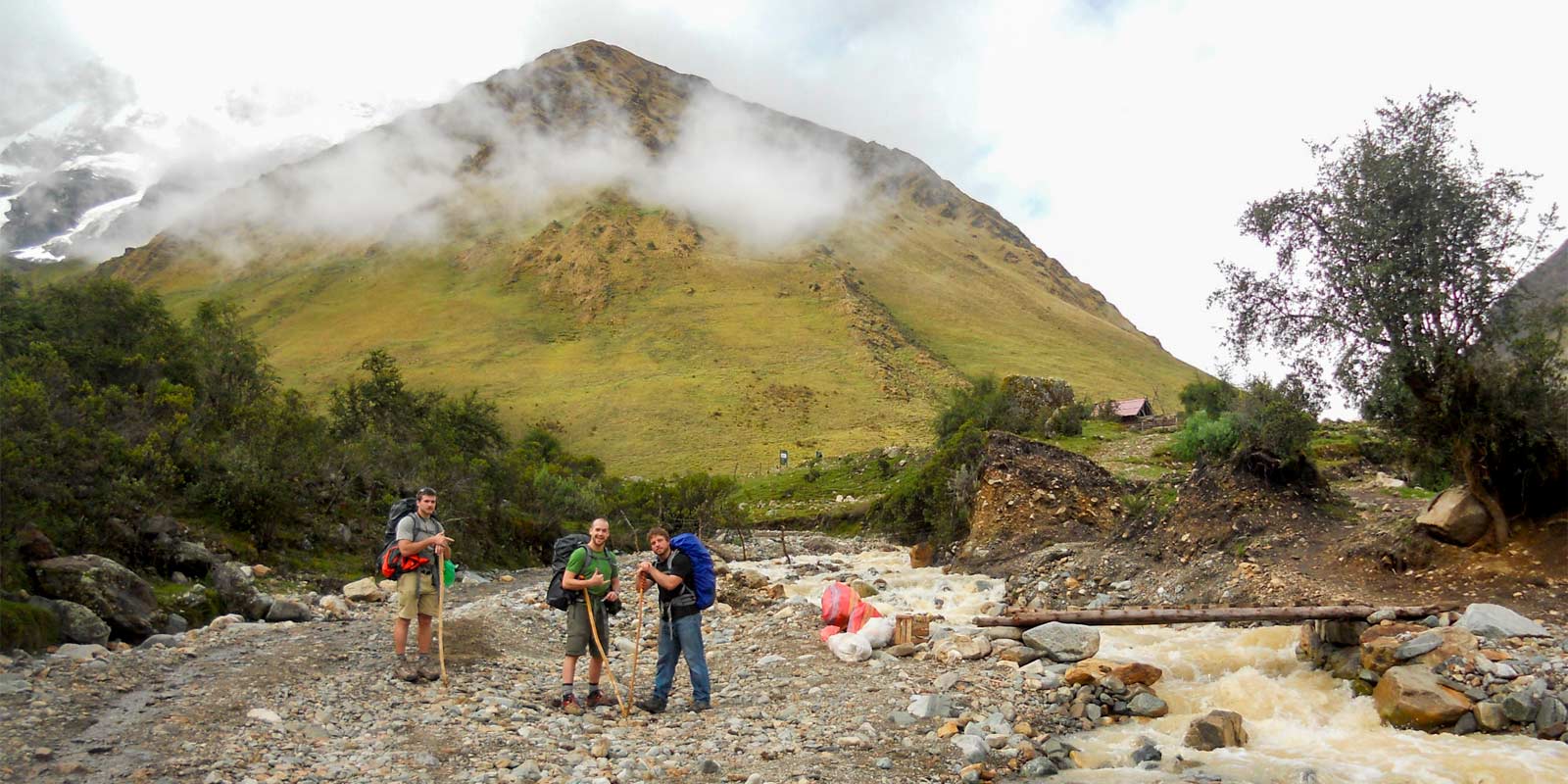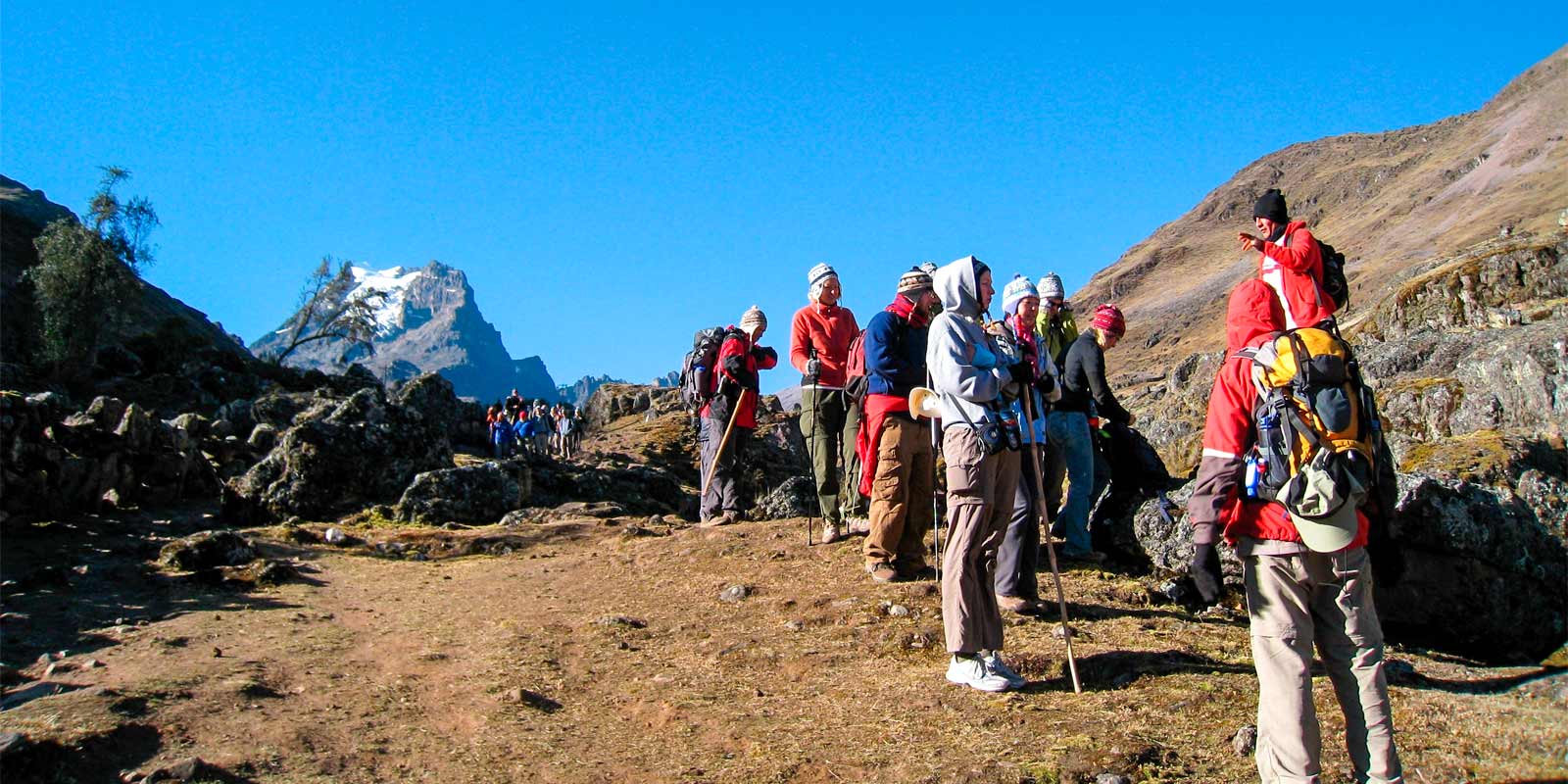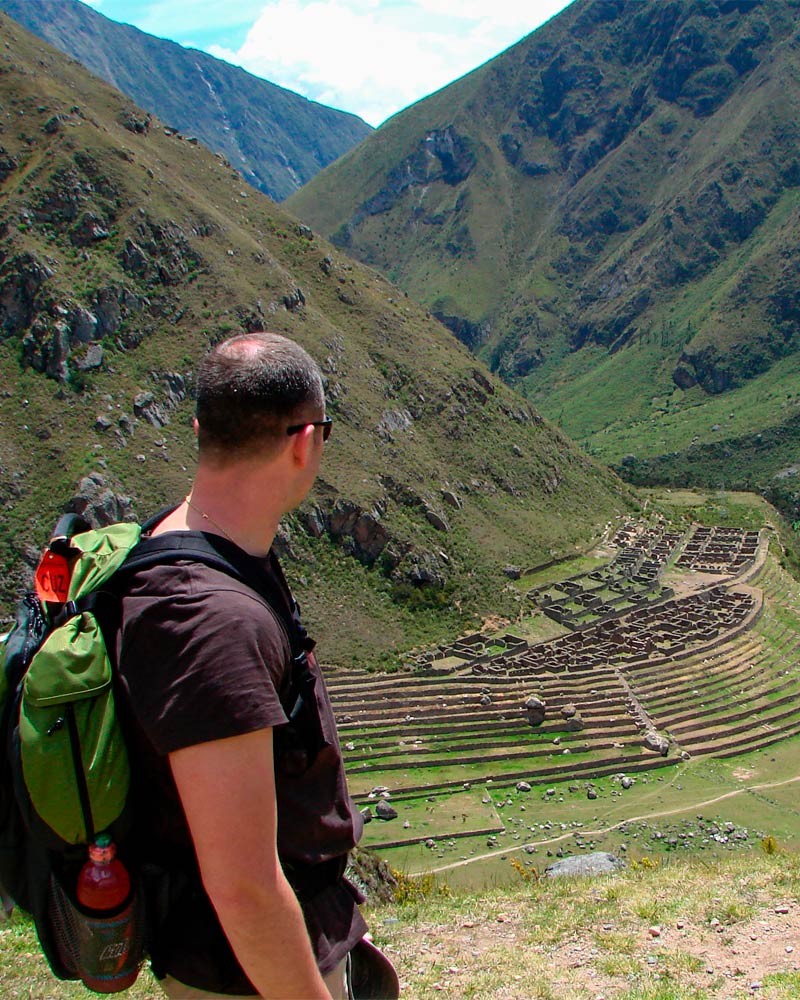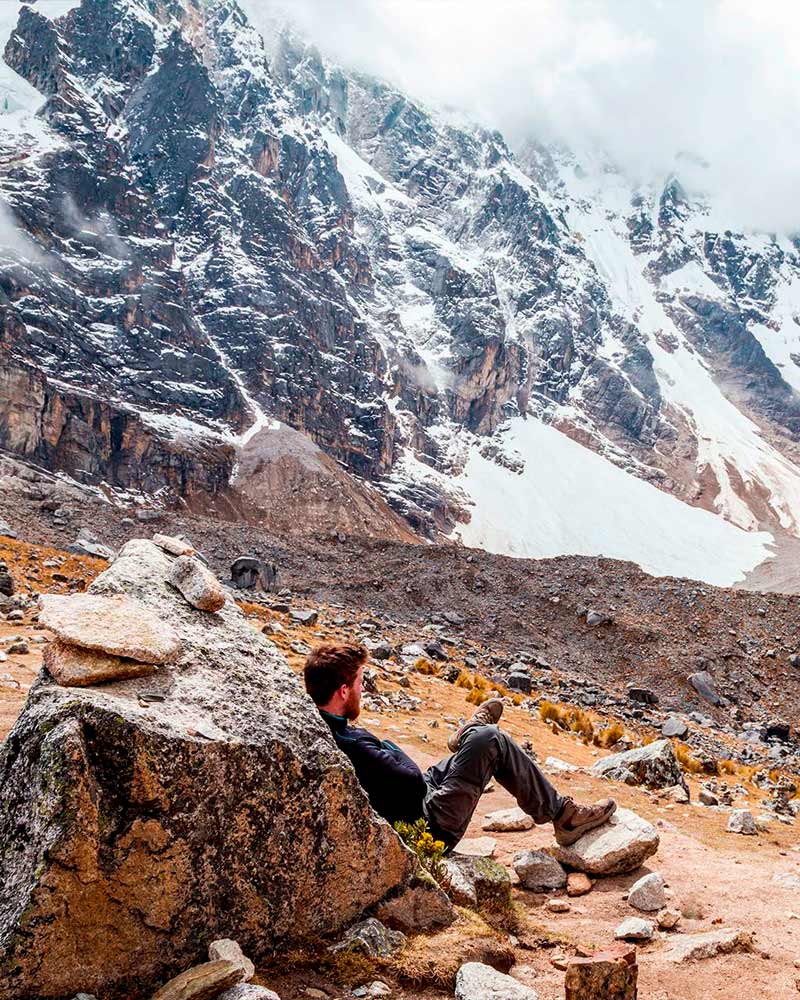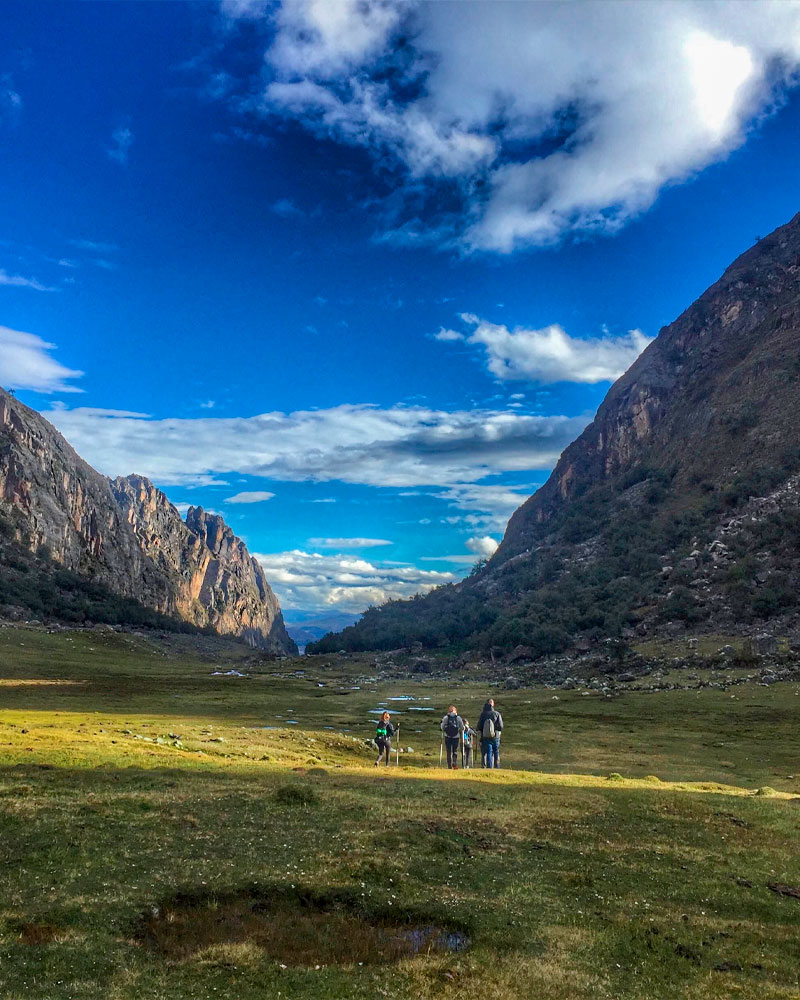Machu Picchu, the jewel of the Andean world, is one of the most wanted places for travelers from all over the world. To get to this wonder of the modern world, there are different paths that not only lead to the sanctuary, but also offer a deep experience in the history, nature, and culture of the old Inca Empire.
Among all the choices, the famous Inca Trail stands out as the most well-known path. However, in recent years, other hikes have become popular, like the Salkantay Trek or the Lares Trek, offering amazing scenery and unique experiences for those looking for less crowded options or more freedom.
So if you visit Peru and want to know: What hike to take to get to the city of the Incas? Then we will help you choose the perfect route for you. We will compare the famous Inca Trail with the main alternative hikes to Machu Picchu, keeping in mind things like the physical level needed, the time you have, the permits required, and helpful tips so that your experience in the Peruvian Andes is unforgettable.
The Inca Trail: The classic route to Machu Picchu
The Inca Trail is an old path that was part of the long road system known as the Qhapaq Ñan, built by the Inca Empire. Of all the roads that led to Machu Picchu Peru, this is the most important because it was designed as a special way to enter the sacred city.
This route not only connects directly with the citadel of Machu Picchu, but it also goes through old archaeological sites, amazing Andean landscapes, and cloud forest. Its fame is because of both its beautiful views and its historical meaning, which makes it the favorite choice for those looking for a more real experience.
History of the Inca Trail
The Inca Trail was built more than 500 years ago as part of the road network that connected all of the Tahuantinsuyo. This specific route to Machu Picchu was used by the Inca elite, including priests and nobles, as a holy path of pilgrimage. After the arrival of the Spanish and the abandonment of Machu Picchu, the path was forgotten until its rediscovery and restoration in the 20th century, when it began to attract adventurers from all over the world.
Trail Details: Distance, Length, and Height
There are two versions of the Inca Trail that lead to Machu Picchu: the classic Inca Trail (4 days) and the short Inca Trail (2 days). Both options give an unforgettable experience, but they fit different kinds of travelers.
- Classic Inca Trail (4 days and 3 nights)
This is the most popular and full version. It covers about 26 miles through a path that mixes mountains, valleys, cloud forests, and old sites like Runkurakay, Sayacmarca, and Wiñay Wayna, before arriving at the amazing Machu Picchu through Intipunku (Sun Gate).
Note: The highest point of the walk is Warmiwañusca Pass at 13,829 feet above sea level, which means this part needs good physical preparation and getting used to the high place. - Short Inca Trail (2 days and 1 night)
This option is great for people who have less time or prefer an easier walk. The walk starts at kilometer 104 of the train track to Aguas Calientes and covers about 6 to 7.5 miles, with a walking time of 6 to 7 hours. You visit the old site of Wiñay Wayna and also enter Machu Picchu through the Sun Gate, but the full entry to the city is the next day.
The height on this path is lower, reaching a maximum of around 8,924 feet above sea level, which lowers the risks related to altitude sickness.
Permits, Spaces, and Official Rules
The Inca Trail is a path protected by the Peruvian government. You can only enter with authorized agencies and with an official permit that must be booked months in advance, especially in high season (May to September). The daily number of visitors is limited to 500 people, including guides and porters. Also, the trail is closed during the month of February each year for maintenance.
Other Hikes to Machu Picchu
Even though the Inca Trail is the most famous way to get to Machu Picchu, it’s not the only one. Other hikes have become more popular in recent years, offering adventures that are just as good with fewer rules and more different views, cultures, and experiences. These paths are great for people who want to avoid the high demand for permits or just want to explore other less crowded ways that lead to the Inca city from different places and cultures.
What are other hikes and why choose them?
Other hikes are walking paths that also go to Machu Picchu, but they are not part of the original Inca Trail Peru. They go through uneven roads, high mountain passes, and Andean communities, and usually don’t need permits months in advance. Choosing one of these options lets travelers have more freedom with dates, have experiences closer to local traditions, and discover less explored landscapes, like glaciers, blue lakes, or Quechua towns.
Salkantay Trek: adventure between glaciers and jungle
The Salkantay Trek, after the Inca Trail, is the most popular hike to Machu Picchu, and it has been recognized by international media like National Geographic as one of the best hikes in the world. This route is known for its amazing variety of landscapes, going from snowy peaks and glacier lakes to tropical forests and coffee farms.
- Name and meaning: “Salkantay” comes from the Quechua Salqa Antay, which means “untamed mountain” or “wild mountain.” The Apu Salkantay (20,574 feet above sea level) is seen as a holy and protective mountain by the Andean communities.
- Length and distance: The classic trek lasts between 4 to 5 days, covering about 43 miles. There is also a shorter 3-day version, great for those who have less time.
- Typical Itinerary:
- Day 1: Start in Mollepata or Challacancha, camp near Soraypampa, and you might be able to visit Humantay Lagoon with its blue-green waters at the bottom of a glacier.
- Day 2: The hardest day, crossing the Salkantay Pass at 15,260 feet above sea level, surrounded by amazing snowy views. Go down towards the Chaullay area, where the change to the cloud forest begins.
- Day 3: Walk through the high jungle or edge of the jungle, with warm weather, passing coffee and fruit farms, and orchids.
- Day 4: Arrive in Aguas Calientes by train or walk from Hidroeléctrica, and stay overnight before going into Machu Picchu.
- Day 5: Guided visit to the Inca city of Machu Picchu.
- Highlights of the Tour:
- Humantay Lagoon, one of the prettiest to take pictures of in Peru.
- Salkantay Pass, the highest point of the route, with stunning views.
- The change of environments: from the cold mountains to the warm tropics.
- Connection with the local culture: rural communities, coffee farmers, and local guides share what they know with travelers.
- Difficulty Level: Medium to hard. The high place, changing weather, and how long the walk is need you to be in good shape and get used to the altitude before, but you don’t need special skills.
- Advantages compared to the Inca Trail:
- You don’t need limited permits or to book months in advance.
- More connection with untouched nature and fewer tourists.
- Flexibility of dates and route options with or without camping.
Lares Trek: Living Culture in the Andes
Unlike other routes, the real treasure of Lares is not just the scenery, but the human contact with communities that still keep their old customs alive.
- Where is Lares?: The walk starts in the Lares Valley, located north of Cusco, between the towns of Calca and Ollantaytambo. The route crosses the Urubamba mountain range, going through faraway villages where Quechua is spoken and life follows the farming seasons.
- Length and Distance: The Lares Trek can be done in different ways from 3 to 5 days, covering between 20 and 25 miles, depending on the starting point and the chosen plan. All versions end with a train ride from the Sacred Valley to Aguas Calientes, the gateway to Machu Picchu.
- Typical Plan:
- Day 1: Ride from Cusco to the town of Lares (10,500 feet above sea level), with a visit to its natural hot springs. Walk to the first campsite in villages like Wacawasi or Cuncani.
- Day 2: Cross high mountain passes like Abra Ipsaycocha (up to 14,600 feet above sea level), surrounded by views of lakes, shepherds, and snowy mountains.
- Day 3: Go down towards the Sacred Valley, visiting communities like Patacancha, known for its traditional weaving.
- Day 4: Train ride to Aguas Calientes and visit to Machu Picchu the next day.
- Highlights of the Trip:
- Direct interaction with Quechua communities, many of whom live without electricity or modern technology.
- Seeing living traditions, like weaving on a waist loom, herding llamas and alpacas, and Andean rituals.
- Unique Andean landscapes, with blue lakes, snowy passes, and high-altitude farmlands.
- Difficulty Level: Medium. Although the altitude can go over 14,400 feet above sea level, the walking pace is usually slower and with time to get used to the altitude. No special skills are needed, but a basic good physical condition is helpful.
- Advantages Compared to the Inca Trail or Salkantay:
- More focus on culture than physical challenge.
- Fewer tourists, great for those looking for a real and quiet experience.
- Flexibility in plans and no need for limited official permits.
Which Hike is Best for You? Things to Think About
Choosing between the Inca Trail and other hikes to Machu Picchu isn’t just about how pretty the view is or how famous the path is. It depends on how you are, what you like, and how you like to travel. Each path has special things about it that can make it great (or not) for different kinds of travelers. That’s why, before you book, it’s important to think about what you want and what you can handle with your body and with planning.
How Fit You Are and How Much You’ve Hiked Before
- Classic Inca Trail (4 days): You need to be in good shape because of its steep parts, stone stairs, and high places that reach 13,800 feet above sea level. It’s best for people who are active and have some experience with long hikes.
- Short Inca Trail (2 days): Good for beginners who are in okay shape. It’s a great choice for people who want to experience part of the trail without doing the whole hard thing.
- Salkantay Trek: This one is the hardest with your body, with the highest point at 15,260 feet above sea level. You need to be strong, get ready before, and get used to the high place. It’s not recommended for people with breathing or heart problems.
- Lares Trek: Even though it also goes to high places, it’s slower and not as much about being physically strong. It’s best for people who care more about the culture than how well they hike.
How Much Time You Have and How You Like to Travel
- Not much time: The Short Inca Trail (2 days) and some versions of the Lares Trek (3 days) are the best choices if you don’t have a lot of time.
- Flexible time: If you have 4 or more days, any of the paths can work for you. The Salkantay and the Classic Inca Trail are full experiences for people who want a long-lasting trip.
- Adventurous and extreme nature: The Salkantay has wilder and more different landscapes, best for people who want to see different kinds of nature and a challenge.
- Cultural and calm: The Lares Trek is more personal and traditional, recommended for people who want a thoughtful experience close to the communities.
Are You Traveling in a Group, Family, or Alone?
- With family or kids: The Short Inca Trail or a special version of the Lares Trek (with car rides) are the easiest choices.
- Groups of travelers: Any of the paths can be fun in a group, but the Inca Trail and the Salkantay usually have well-planned group trips with special agencies.
- Solo travelers: All the paths are okay for people traveling alone, but it’s recommended to hire a guide or agency for safety. The Lares Trek, with its focus on culture, can be especially good for solo travelers who want to connect with people.
|
|
|
|
Useful Tips for Your Trekking Experience
To really enjoy your adventure to Machu Picchu, it’s important to get ready well. Whether you choose the Inca Trail, the Salkantay Trek, or the Lares Trek, these tips will help you be ready for the hard walking, the weather changes, and the high place, plus make sure your experience is safe and good.
What to Carry in Your Backpack
Packing well can make a big difference between a comfortable walk and one full of problems. Only taking what you need and choosing things that work well and are light is key.
Recommended Items:
- Backpack of 8 to 10 gallons with back support
- Sleeping bag for cold temperatures (especially on Salkantay and Lares)
- Trekking clothes in layers (warm clothes, fleece, waterproof clothes)
- Trekking poles (optional but good to have)
- Waterproof hiking shoes that you have used before (not new)
- Hat, sunglasses, and sunscreen
- Rain poncho or waterproof jacket
- Headlamp with extra batteries
- Reusable water bottle or water system + water cleaning pills
- Energy snacks (nuts, bars)
- Basic personal first-aid kit (your own medicines, blister pads, pain relievers)
- Personal documents, cash money (small bills)
Best Time of Year for Each Route
The weather in the Peruvian Andes changes depending on the season. Choosing the right time can help you avoid heavy rains or very cold weather.
- Dry Season (best): May to September: sunny days, clear skies, and good conditions for trekking. It’s also the busy season, with more tourists, especially in June and July.
- Rainy Season (not as good): November to March: slippery paths and less clear views. The Inca Trail closes all of February for fixing.
Recommendations by Route:
- Classic and Short Inca Trail: May to October
- Salkantay Trek: April to November (avoid January and February)
- Lares Trek: May to September (but can be done all year with care)
Getting Ready Before and Getting Used to the Altitude
The high place is one of the biggest challenges. The best way to stop altitude sickness is to get used to the high place well before you start trekking.
Recommendations:
- Arrive in Cusco at least 2 or 3 days before you start walking.
- Avoid hard physical activity in the first few days.
- Stay hydrated and eat well.
- Drink coca tea (a traditional natural remedy).
- Talk to a doctor if you have heart or breathing problems.
- Bring pills for altitude sickness, like acetazolamide (Diamox), after talking to a doctor.
Recommendations for Hiring a Trustworthy Agency
A good agency makes a difference in safety, plans, food, and the whole experience. This is very important on routes like the Inca Trail, where permits are limited and only allowed agencies can run them.
How to choose well:
- Check if the agency is allowed by the Ministry of Culture of Peru (for the Inca Trail).
- Read online reviews (TripAdvisor, Google, travel forums).
- Ask about the kind of gear they use, if they include horses or porters, food, first aid, and if they have emergency oxygen.
- Make sure the guides are certified and have experience.
- Be careful of very low prices: they might mean bad services or unfair practices with local workers.

